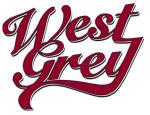In metropolitan centres around the world bitter struggles and lawsuits continue about the social equity of spending tax dollars on rail in lieu of buses. The overarching reason is that low-income residents on limited transit budgets rely heavily on buses, which can serve more dispersed locations than rail.
In the Los Angeles region, for example, the Bus Riders' Union has been challenging the Metropolitan Transportation Authority since 1994 over its high expenditures on the construction of rail projects while neglect of the bus service remains consistent. According to bus advocates, some 92 percent of Los Angeles County's bus riders are people of colour with median household incomes of USD12,000. Every service cut and fare hike hurts them disproportionately. Similar grievances and lawsuits have occurred in the San Francisco Bay area, Atlanta, Memphis, and many other U.S. Metropolitan areas.1
Part of the problem derives from the way transit is financed in the U. S. Particularly because buses can be stalled in mixed traffic, the bus riders do not come close to paying for their service through the fare box. Paradoxically, each additional passenger increases the amount of subsidy needed, and the transit managers are inclined to view new bus riders as a fiscal drain.
It is often assumed by advocates for each mode that bus and rail transit alternatives are competing for the same source of money - that spending on buses and rail is a zero-sum game. According to research done by Jonathan Levine, professor of urban planning at the University of Michigan, spending on one of these modes is positively associated with spending on the other. This occurs because of the necessary interaction between the modes such as buses that operate as feeders for rail service.
Investment in rail transit does not necessarily have to come at the expense of investment in the local bus network. A case in point can be found in France, where the insertion of new light rail trams has been accomplished in 27 cities since 1985. The trams have been carefully coordinated with extensive pre-existing bus systems. In each of the cities, the light rail now serves as the backbone of the transit system, while the buses again function as critical feeders, this time, to the light rail. As a result, gains in overall transit ridership have been impressive - typically between 30 percent and 60 percent while fare box recovery has been excellent, averaging 48 percent. This is happening in spite of moderate fares and union drivers, and despite the fact that on some lines, heavily discounted students' fares make up over half of the riders. In fact, similar light rail projects are afoot as I write this in my home city in Canada. The Toronto Rapid transit projects are part of The Big Move,' a 25-year, $50 billion light rail transit programme that will transform regional transportation across Greater Toronto and a neighbouring city, Hamilton, Ontario
Let's talk small cars.
Since the mid-1980s, the fuel economy of our automobiles has been improved. Unfortunately, much of that efficiency has been lost in making vehicles heavier (by 29%) and more powerful (by 86%), so that the resulting fuel economy for average automobiles had, by 2010, actually been lowered by five percent. Then, in 2012, when the U.S. standard for fuel efficiency was only around 29 miles per gallon (12.2 l/100 km), the government mandated that this standard be gradually raised by 2025 to 54.5 miles per gallon (6.5 l/100km).2
Given the markedly low base of public ridership in the U.S., there is an assumption among many transportation planners that even a doubling of the country's mass transit riders would net relatively small gains in the conservation of energy. This would be by comparison with the savings that might be realized through the conversion of passenger cars to smaller, lighter, and more energy-efficient vehicles. This, for now, seems to be an appropriate strategy for short trips within existing cities and inner suburbs. However, the average length of commuter trips has, at least until very recently, been increasing every year, and longer trips call for travel at higher speeds. The very lengths and speeds of many of these trips are ill-suited to, and tend to discourage the use of small, energy -efficient cars which afford less power in propulsion and less protection in serious accidents, especially in competition with heavier (GT-type luxury) cars, SUVs, buses, and trucks.
Markets are alive with gas-electric hybrid cars, plug-in hybrids, rechargeable electric vehicles, and battery-powered units. Toyota has already released a model that is powered by a hydrogen fuel cell. It's no secret that if any or all of these cars were to dominate the market, they could end our dependence on fossil fuels and would immediately reduce the magnitude of today's air pollution and greenhouse gases. Alternatively, this could also be the case if and when direct algae-to-fuel-grade ethanol is achieved inexpensively and commercially. No matter what happens with all of these technologies, however, the world will still be faced with space-related problems of traffic congestion and parking that are integral to a primary private automobile-based transportation system. But neither the small car nor future hypercars would adequately address the issue of which kinds of transportation would be the most beneficial to foster in conjunction with compact development, or within walkable communities.
For whatever the relative energy savings of smaller cars and cleaner, more locally obtainable fuel may be, it should not be forgotten that it is the higher-capacity (shared, public) transit modes, which, because of their much more efficient use of space and fuel, will enable the uncongested functioning of more compact forms of development - thereby reducing the travel required and the fuel and space consumed in the first place.
While electric vehicles will emit fewer pollutants into the urban environment, the actual production of each electric vehicle emits about twice as much carbon dioxide equivalent as its internal combustion counterpart - about 87, as compared with 45, grams. These are the findings of researchers at the Norwegian University of Science and Technology, who took into consideration the electric car's reliance on rare minerals, the complexity of its batteries, and overall labour and production factors, in assessing its greater environmental intensity.' The researchers also took note of the obvious fact that it will be counterproductive to promote electric vehicles where the electricity is primarily produced from burning coal, lignite, or oil.3
Again, not to put too fine a point on it, whether it's an electric or internal combustion vehicle - there is the space issue, a plague that countless motorists are faced with on a daily basis.
1 Dan Bluemel, "Transit Panel Accuses MTA of Civil Rights Violations," l.a.activist, August 11, 2011; Jackie Orozco,
"Memphis Bus Riders Union File Lawsuit against MATA," Local Memphis.com, March 18, 2012
2 Warren, Roxanne. Rail and the City-Shrinking Our Carbon Footprint While Reimagining Urban Space. Boston: MIT Press, 2014
3 Ibid















